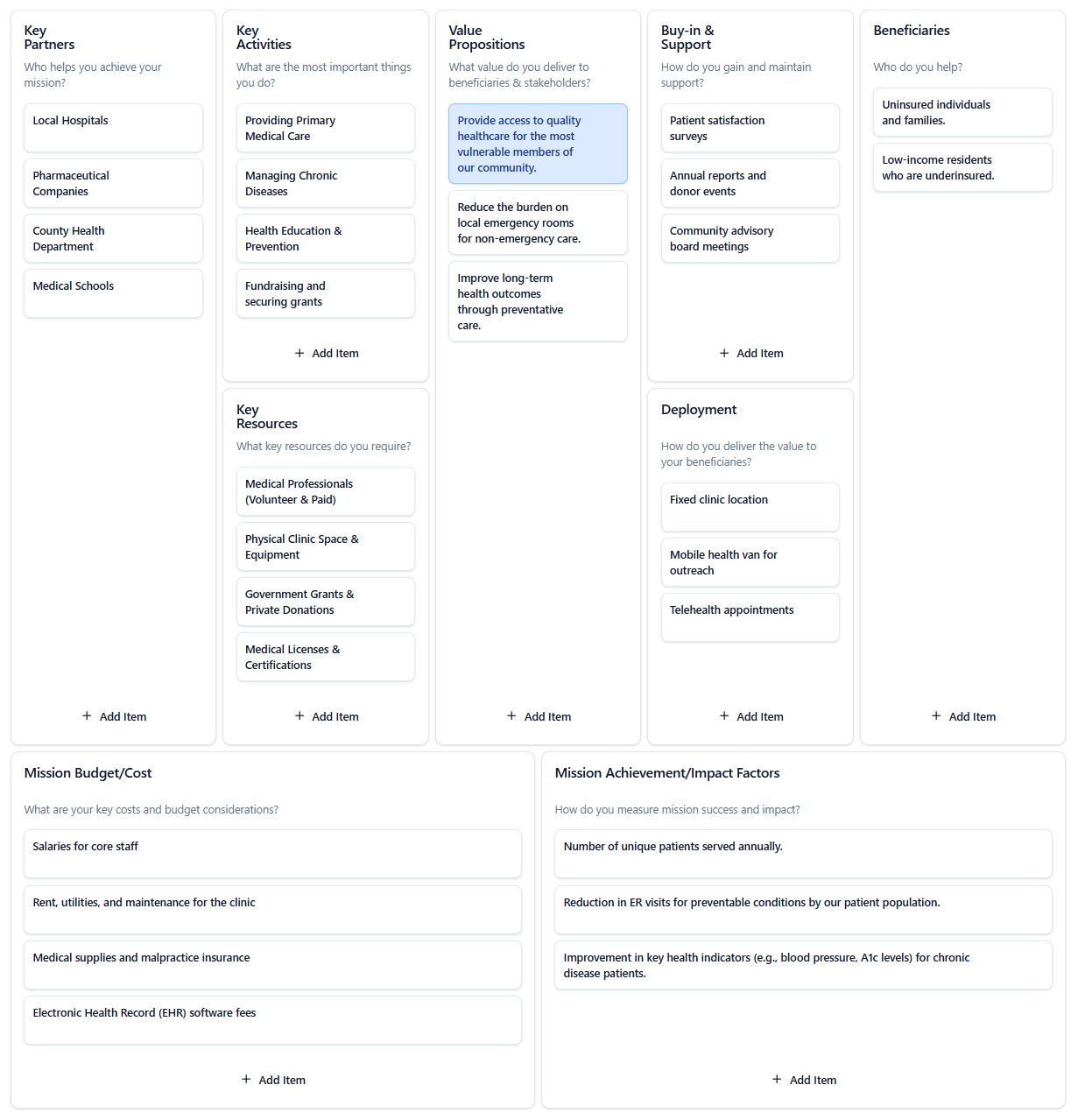Environmental
River Cleanup Alliance
An environmental non-profit focused on organizing volunteers to clean and restore a local river ecosystem.

Analysis & Interpretation
Background
The River Cleanup Alliance is a community-based environmental non-profit. Its model is lean and action-oriented, focused on mobilizing volunteers to achieve a tangible environmental outcome. This analysis explores its reliance on community engagement as a core resource.
Key Strategic Insights
- Volunteers are the Engine: For this organization, ‘Volunteers’ are not just a ‘Key Resource’; they are the primary ‘Key Activity’ and the core of the ‘Value Proposition’ for community members. The entire model is built around engaging and empowering this group.
- Impact is Visible and Measurable: The ‘Mission Achievement’ metrics (‘Tons of trash removed’, ‘Improvement in water quality’) are tangible and easy to communicate. This makes it easier to demonstrate impact to funders and the community, creating a positive feedback loop for ‘Buy-in & Support’.
- Partnerships Unlock Operational Capacity: The ‘Key Partnership’ with the ‘City Parks Department’ is crucial. It provides the legitimacy (permits) and logistical support (waste disposal) that the volunteer-run organization could not manage on its own. This is a key enabler for the entire operation.
Strategic Summary
This is a highly effective model for a grassroots environmental organization. Its strength lies in its simplicity and the tangible nature of its mission. The primary challenge is volunteer burnout and maintaining momentum. The strategic priority should be to invest in the ‘Volunteer Coordinator’ role and create strong ‘Buy-in & Support’ activities (like appreciation events) to build a loyal, recurring base of volunteers, which is the organization’s most critical asset.
How This Was Built
This Mission Model Canvas shows how organizations can transform a broad vision into structured, actionable components through AI-enhanced planning.

AI for Mission Structuring
The AI Framework Builder generated starting ideas for the Purpose, Resources, and Implementation Channels, ensuring every part of the mission was clearly defined.

Organized Visualization
Colors differentiated between value delivery, partnerships, and funding elements, while tags were used to trace dependencies across the mission ecosystem.

AI Insight Validation
After completing the setup, the AI Review Tool suggested which impact metrics to track first and identified assumptions that should be tested with stakeholders.
Bring This Example to Life
Load this Mission Model Canvas in the tool to visualize your organizational goals, fine-tune the path to impact, and leverage AI to ensure clarity, focus, and sustainable growth.
